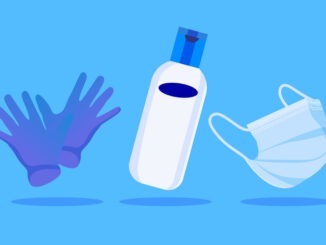
What advice does the CQC offer on how you can avoid infection, and keep control of your general practice
CREDIT: This is an edited version of an article that originally appeared on CQC
The CQC judge compliance with registration requirements set out in the regulations; all providers of healthcare and adult social care should meet or exceed the Code of Practice on the prevention and control of infections and related guidance. The Code states:
‘Good infection prevention (including cleanliness) is essential to ensure that people who use health and social care services receive safe and effective care. Effective prevention and control of infection must be part of everyday practice, and be applied consistently by everyone. Good management and organisational processes are crucial to make sure that high standards of infection prevention (including cleanliness) are developed and maintained’.
The CQC base their expectations of registered providers on the criteria contained within the code. Their findings help them decide if providers deliver safe, effective and well-led services.
The National Standards of Healthcare Cleanliness 2021 replace the 2007 specifications for NHS cleanliness. This guidance mirrors expectations for GP providers which are already covered by regulations and the Code of Practice – for example, IPC audit processes, waste management, cleaning schedules and maintenance of equipment.
Coronavirus (COVID-19)
Infection prevention and control (IPC) guidance strengthens existing messages and provides further clarity. This includes updates to the care pathways to recognise testing and exposure. The guidance also contains appendices. They support the remobilisation and maintenance of mental health and learning disability services.
General requirements
Providers should have an effective IPC policy which should be relevant to their practice. It should be accessible to all staff and regularly updated, and should include the contact details of the local IPC specialist team.
The policy should include specific requirements for higher risk procedures – for example, the fitting of contraceptive devices and minor surgery. There should be an IPC lead with overall responsibility for IPC who should have the authority to lead and implement change where needed. There should be an IPC audit programme, so that policies and procedures are effective and up-to-date. There should be evidence of issues identified by the audit and how they were addressed.
The policy should include staff training requirements and frequency of training updates.
Cleaning contractors should have a schedule of general cleaning which should include the cleaning frequency of specific areas, fixtures and fittings, including high frequency touch items such as keyboards, telephones, door handles and light switches. It should be checked regularly for compliance and be in line with what the general public would expect in health care premises. The policy should include responsibilities for the cleaning of specific clinical equipment.
Staff should have access to occupational health services. They should be immunised according to the Public Health England Green Book. The policy should include the use of personal protective equipment (PPE); this includes staff training in safe use and disposal of PPE.
Specific issues
Curtains and window blinds – curtains around examination couches may be either disposable or re-usable. There is no mandatory frequency for changing or laundering curtains, though the National Specifications for Cleanliness in the NHS suggests frequency. The specifications are guidance on setting and measuring performance outcomes in primary care. The CQC expects providers to assess the risk attached to each item, including curtains; providers should follow their own protocol.
There should be a programme of cleaning for curtains and other window coverings in non-clinical areas; this should include regular vacuuming. The programme should specify when curtains will be cleaned, and curtains should be changed immediately if visibly soiled or stained.
Carpets – clinical rooms should not have carpets. There should be a policy for the frequency of cleaning carpets in consulting rooms and other communal areas. The policy should include actions to take if carpets are contaminated with body fluids or spillages.
Health care waste – primary care providers have a statutory duty of care which requires all reasonable measures to be taken to deal with waste appropriately from point of production to final disposal.
General clinical waste – bins should be easily accessible to staff at point of use. In clinical areas they should be lidded and operated with a foot pedal. Waste should be assessed and segregated appropriately. Waste bags should be:
- maximum two thirds full and securely tied;
- labelled with the address and date before collection;
- stored in a secure, clean, designated area while awaiting collection.
Medicines waste – medicines waste should be stored in a designated bin and collected regularly by an appropriate waste contractor. Purple-topped bins, including sharps bins, must be available. These are for the disposal of cytotoxic medicines (which include hormones); staff should be aware which medicines should be disposed of in each bin.
Denaturing kits must be available for the disposal of controlled drugs. There should be a written procedure to govern the process, and evidence that dispensary stock CDs are only disposed of in the presence of an authorised witness. Labels, prescriptions and other patient identifiable documents must be treated as confidential waste.
Sharps – sharps should be assessed and disposed of in the correct container. Containers are orange, yellow or purple-lidded depending on nature of the item. Containers should be labelled on assembly and on locking. They should not be filled above the black line. Lock and dispose of containers after three months even if not full. All staff should be assessed for risk of contracting blood-borne viruses and should be offered vaccination, as appropriate. The process for action following a sharps injury should be clear and accessible to all staff.
Hand hygiene – adequate handwashing facilities must be available, and easily accessible, for all staff. This should allow the washing of hands in hot water using the correct technique. Liquid soap, paper towels and alcohol gel should be available. Hand hygiene should be included in staff training. Disposable gloves and other PPE should be available and used as appropriate, with staff training being provided where necessary.
Inspections
The CQC use these regulations when they review to assess if a practice is:
- safe;
- effective;
- caring;
- responsive;
- well-led.
When the CQC inspects the management of infection prevention and control they assess against:
- Regulation 12 (Safe care and treatment).
- Regulation 15 (Premises and equipment) of the Health and Social Care Act 2008 (Regulated Activities) Regulations 2014.
These regulations remind providers that they must:
Assess the risk of, and prevent, detect and control the spread of, infections, including those that are health care associated.
Ensure that healthcare premises are clean, secure, suitable and used properly, and that a provider maintains standards of hygiene appropriate to the purposes for which they are being used.
The CQC also use key lines of enquiry – in particular, S1 ‘Safeguarding and protection from abuse’ which assesses how providers:
- maintain standards of cleanliness and hygiene;
- have reliable systems in place to prevent and protect people from a healthcare-associated infection;
- maintain and use of facilities and premises in a way to keep people safe;
- manage waste and clinical specimens to keep people safe.


Be the first to comment